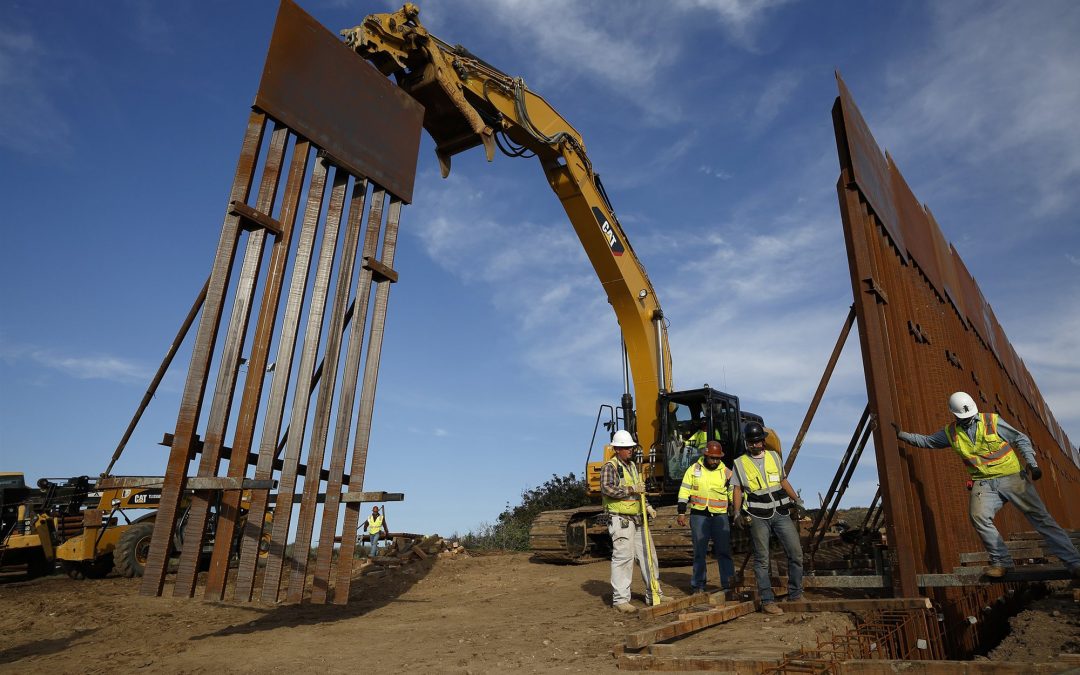With President Trump scrambling to find money to build his promised border wall, landowners at the US/Mexico border are preparing for a legal battle to stop Homeland Security from seizing their land.
The federal government has started surveying land along the border in Texas and announced plans to start construction next month.
Rather than surrender their land, some property owners are digging in, vowing to reject buyout offers and preparing to fight the administration in court.
Eloisa Cavazos told the Associated Press she knows firsthand how the project will play out if the White House gets its way.
“You could give me a trillion dollars and I wouldn’t take it,” said Cavazos, whose land sits along the Rio Grande, the river separating the U.S. and Mexico in Texas. “It’s not about money.”
The government has laid out plans that would cut across private land in the Rio Grande Valley.
Those in the way include landowners who have lived in the valley for generations, environmental groups and a 19th century chapel.
Many have hired lawyers who are preparing to fight the government if, as expected, it moves to seize their land through eminent domain.
Nayda Alvarez wants nothing to do with any border wall, but her acre of land in Rio Grande City, Tex., where she lives in a brown house along the dividing line between the United States and Mexico, has become of great interest to the U.S. government.
She, along with dozens of other landowners in the Rio Grande Valley, received surprise letters from the federal government in recent months, requests from officials who are seeking access to their properties for surveys, soil tests, equipment storage and other actions.
It is, lawyers and experts say, the first step in the government trying to seize private property using the power of eminent domain — a contentious step that could put a lengthy legal wrinkle into President Trump’s plans to build hundreds of miles of wall, some of which passes through land like Alvarez’s.
Previous eminent domain attempts along the Texas border have led to more than a decade of court battles, some of which date to George W. Bush’s administration and have yet to be resolved.
Many landowners, like Alvarez, are vowing to fight anew.
Alvarez refused to sign over access to her property, which was handed down from her grandfather.
She yelled at her father for allowing the government onto his land.
And she had a message for Trump today: no border wall, a phrase she wanted to write on her roof so Trump could see it if he flew over her home. She decided against doing so because of rain.
Even a compromise solution to build ‘steel slats,’ as Trump has suggested, or more fencing of the kind that Democrats have previously supported would likely trigger more court cases and pushback in Texas.
Legal experts say Trump likely cannot waive eminent domain – which requires the government to demonstrate a public use for the land and provide landowners with compensation – by declaring a national emergency.
Approximately 100 landowners have received new government letters seeking access to private property for the purposes of determining how — and where — the wall could be built.
The letters are the first of a two-step process the government uses in cases of eminent domain, lawyers involved in the cases and experts said.
It first requests to survey the land, a step to which landowners often agree.
If the land is suitable for the government’s intended use, it moves to take the land either by convincing the owners to sell or turning to the courts to force the sale.
“If it’s going to be a contiguous wall across the entire southwest border, you’re talking about a massive land seizure of private property,” said Gerald S. Dickinson, an assistant professor of law at the University of Pittsburgh who focuses on land use and constitutional law.
Most people, he said, are not willing to voluntarily hand over their land, even with a fair market price, forcing the government to go to court to obtain it.
“You’re talking about thousands and thousands of eminent domain proceedings that would have to run through federal district courts in Texas for the most part, but also places such as Arizona and New Mexico.”
Trump has long defended using eminent domain claims, which he once invoked — unsuccessfully — in trying to force a New Jersey widow from her Atlantic City home, saying that “without eminent domain, you wouldn’t have any highways.”
The Atlantic City Casino Redevelopment Authority sent the woman a notice offering her $250,000 for her property and threatened an eminent domain seizure.
Trump was trying to build a limousine parking lot next to his Trump Plaza casino.
A New Jersey court ruled against Trump and the authority.
The owner of the home later moved to California and her house was sold at auction and demolished — the empty lot sits behind the vacant shell of the shuttered Plaza.
Last week, Trump again called eminent domain “a fair process” and “very necessary.”
